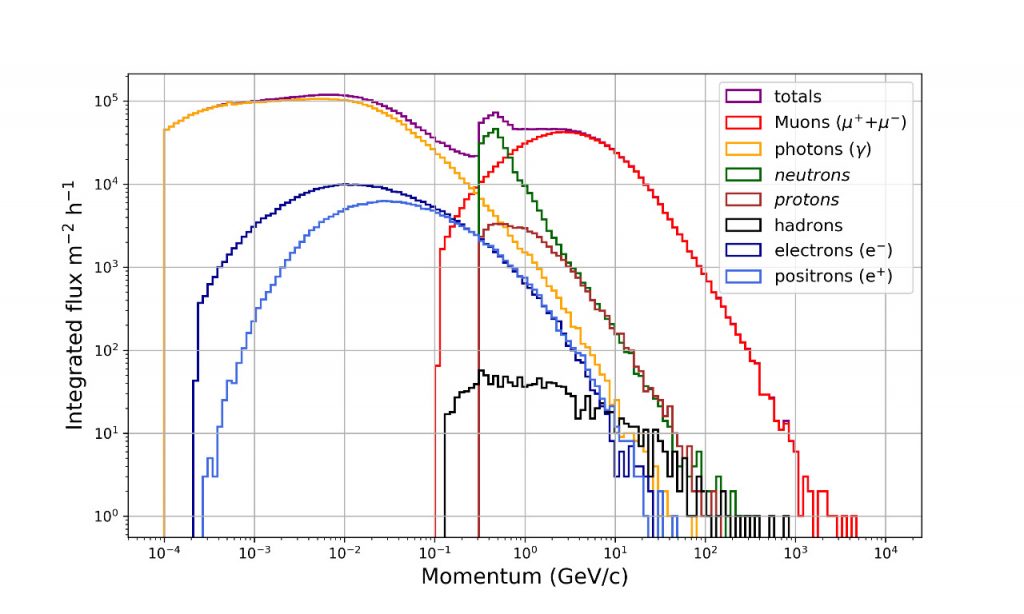Cosmic Ray flux
One of the first steps in the muography simulation framework is to know the particle flux at the observation place. We chose the Cerro Machin volcano (2650 m a.s.l.), located on the Andean mountain range in the southwest of Colombia.
For that, we carried out Monte Carlo simulations to estimate the spectrum of secondary cosmic rays at ground level. We used the CORSIKA (COsmic Ray SImulations for KAscade) program for detailed simulation of extensive air showers.

The spectrum of secondary particles has two principal humps overlapped in 0.3 GeV/c. The electromagnetic component (electrons, positrons, and gamma photons) shapes the first hump with an average momentum ~20 MeV/c. The second hump represents the muonic component. The muon momentum average is ~3 GeV/c. Neutrons peak at ~500 MeV/c but are undetectable for muon telescopes. Hadron flux (pions and kaons) reaches three magnitude orders less than muons being a negligible background source.